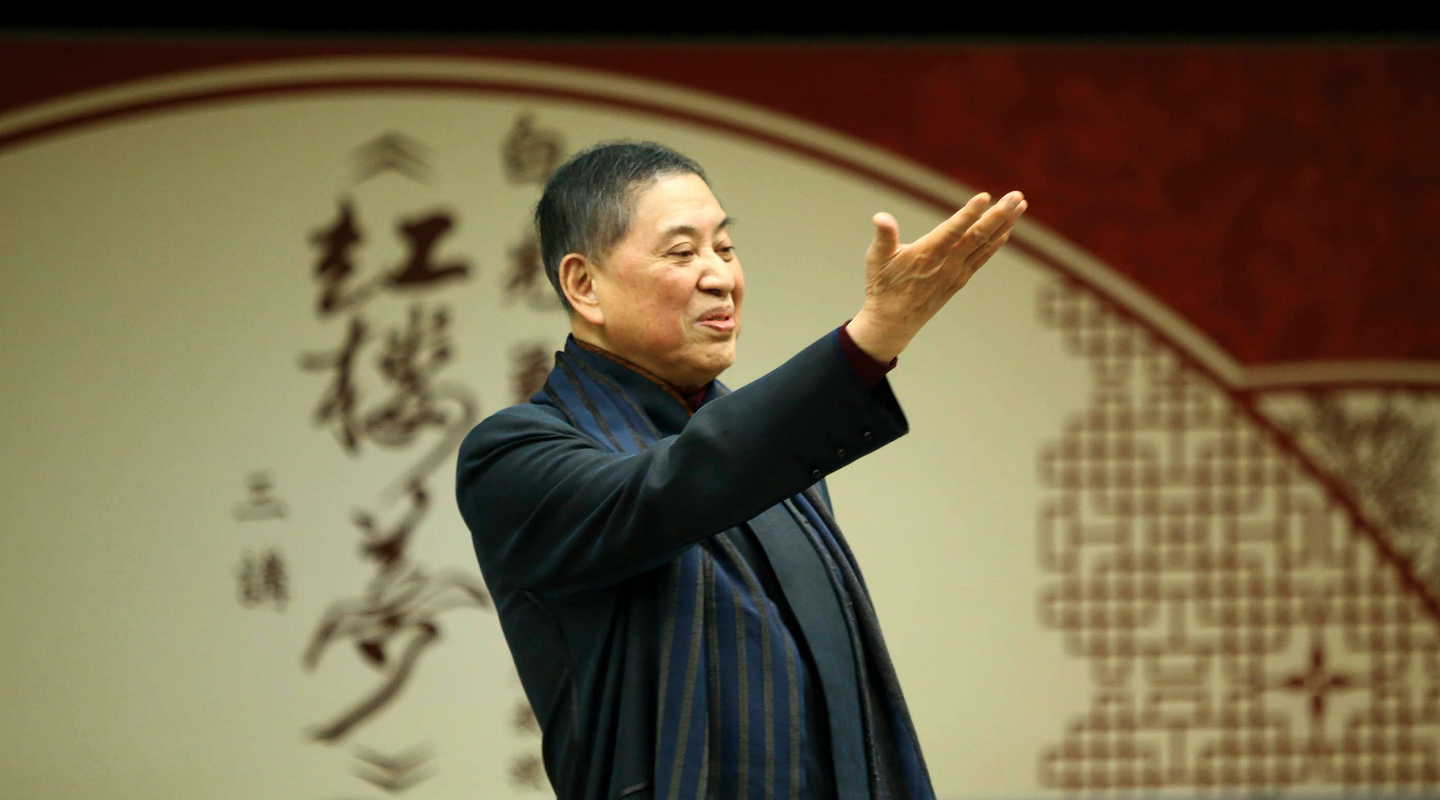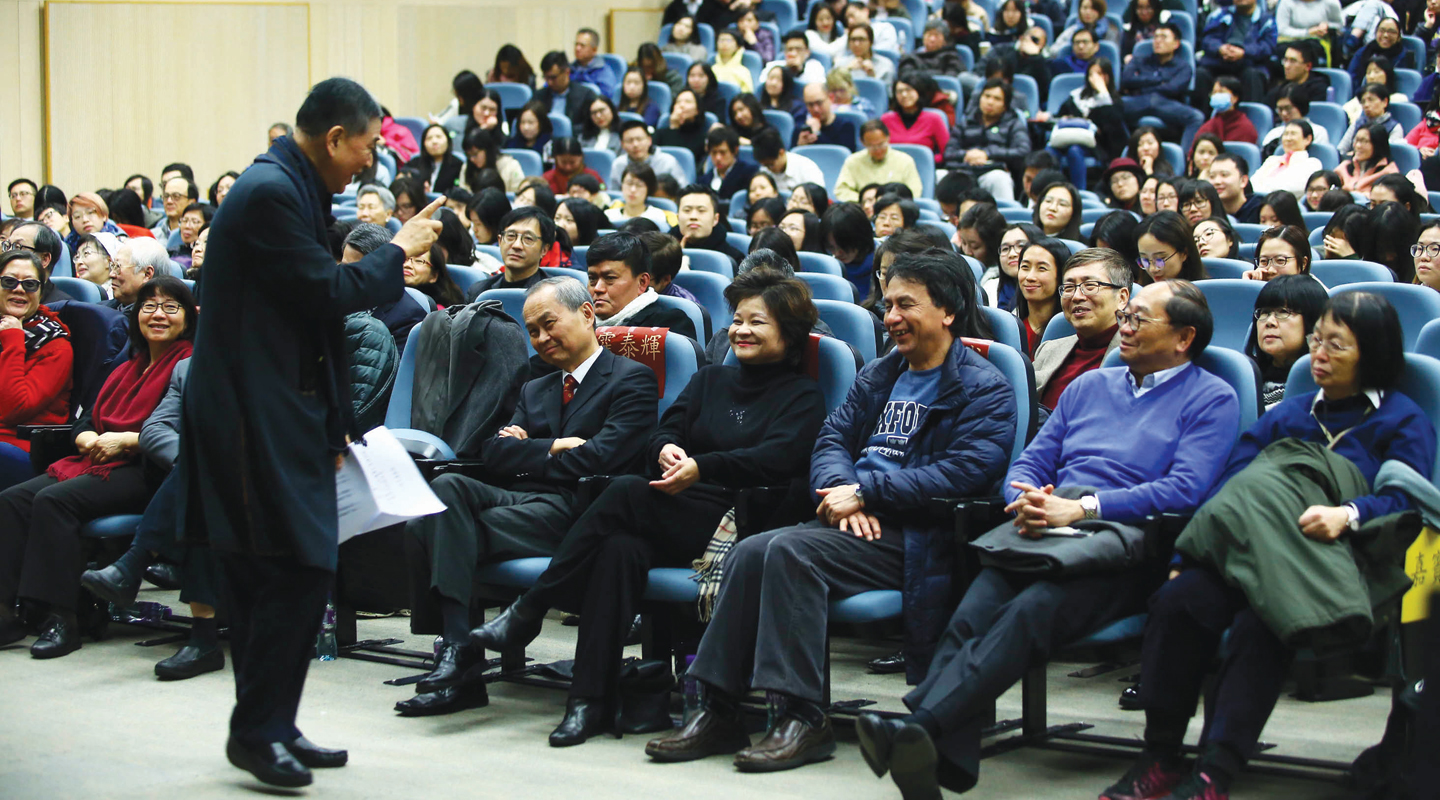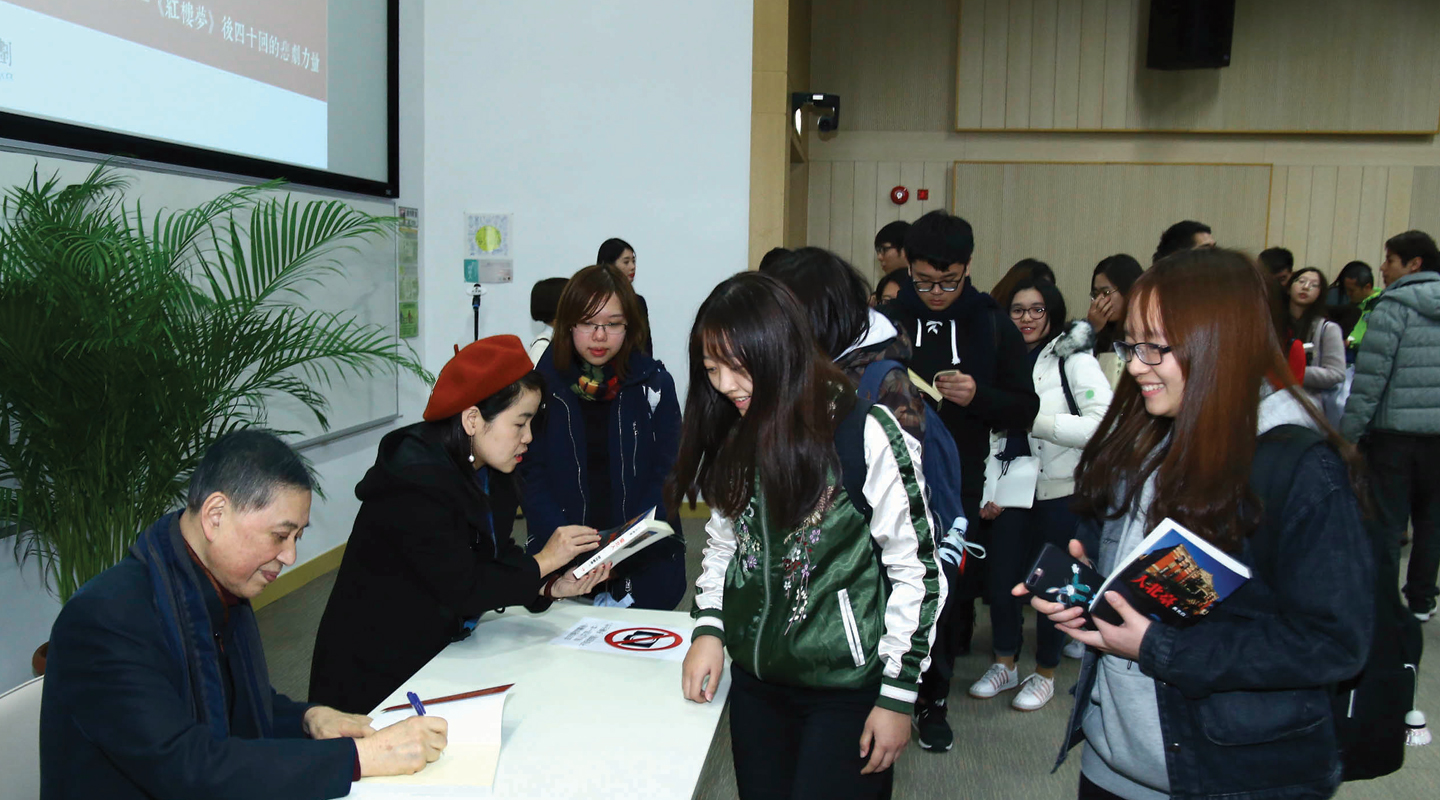Dear readers, With the launch of e-newsletter CUHK in Focus, CUHKUPDates has retired and this site will no longer be updated. To stay abreast of the University’s latest news, please go to https://focus.cuhk.edu.hk. Thank you.
A Closer Look at The Dream of the Red Chamber

Prof. Pai Hsien-yung delivered a series of three evening public lectures on the classic Chinese novel The Dream of the Red Chamber between 29 January and 2 February. These were the first lectures he delivered at CUHK as Distinguished Professor-at-Large.
The subject of the talks, The Dream of the Red Chamber—an epic late-18th century saga by Cao Xueqin, which has spawned its own academic discipline—attracted hundreds of students, alumni, staff members and members of the public. In his opening remarks at the first lecture, Pro-Vice-Chancellor Prof. Fok Tai-fai paid tribute to Professor Pai’s boundless charisma and tireless effort to regenerate enthusiasm in Chinese culture.
Professor Pai, a novelist and a scholar on Red Chamber himself, shared his views on the novel’s use of poetry, its two different major versions and the power of tragedy in its final portion in the three lectures.
In the first lecture, Professor Pai analysed the links between the plot of Red Chamber and the many poems and lyrics featured therein, explaining how the poetry often acts to foreshadow its storyline. He called the novel an ‘epic elegy’ at the peak of Chinese culture in Qianlong-era, and pointed out the many symbolisms in the book’s characters, like the contrast between the protagonist Jia Baoyu and his father, Jia Zheng.

The second lecture was a discussion on the comparison between the two major versions of Red Chamber, as reflected through the character You Sanjie, whose brief appearance and subsequent suicide in the middle section nevertheless rippled throughout the book. Professor Pai honed in on You Sanjie’s vastly different portrayals in the Rouge and Cheng-Gao versions of the novel—she was depicted as a strong-willed woman in the latter, but a wanton in the former. He then further discussed the discrepancies between the texts: the Rouge version was based on a series of hand-copied manuscripts, while the Cheng-Gao version was printed in the 1790s, after Cao’s death.
Professor Pai’s final lecture focused on the power of tragedy in the final 40 chapters of Red Chamber, as exhibited by the red cape worn by Jia Baoyu as he becomes a monk in the final chapters, and the tear-stained handkerchief burnt by Lin Daiyu before her death. He explained that, given the Jia clan’s fall from grace in the last third of the novel, the deviation in tone between the first 80 chapters and the final 40 could be accounted for artistically, and that the final 40 chapters were likely to have at least been drafted by Cao himself. Professor Pai concluded that even the finest details in the book are fraught with symbolisms.

Book signing sessions following the first two lectures attracted legions of eager fans of Professor Pai. He also answered questions on a variety of topics related to Red Chamber following the final lecture. All three lectures can be watched in full on the Facebook page of the Faculty of Arts.
This article was originally published in No. 513, Newsletter in Mar 2018.